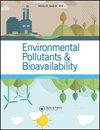柑桔类黄酮橙皮苷提高家鸡蛋壳微量营养素生物利用度的体外研究
Q3 Chemical Engineering
引用次数: 7
摘要
食用柑橘类黄酮、橙皮苷可抑制骨质流失。本研究的目的是评估橙皮苷对钙的生物利用度的影响,钙可能是预防骨质流失的原因。研究了柑橘类黄酮(橙皮苷)与柠檬酸和抗坏血酸的联合作用,并采用体外方法评估了鸡蛋壳中微量营养素的生物利用度。考察了柠檬酸、抗坏血酸和橙皮苷对锌、铁等矿物质和钙、镁、磷等宏量元素生物利用度的影响,得出了获得最大生物利用度所需的添加量。在每g鸡蛋壳粉中添加3 g柠檬酸、100 Mg抗坏血酸和4 Mg橙皮苷时,Ca、Mg、P、Fe和Zn的生物利用度最高,分别为89.25±2.13、92.28±1.87、40.32±3.09、32.81±1.24和46.19±0.83%。柠檬酸显著影响钙、镁、磷和锌的生物利用度,添加抗坏血酸提高了铁的生物利用度,橙皮苷提高了蛋壳中所有微量元素的生物利用度(P < 0.05)。本文章由计算机程序翻译,如有差异,请以英文原文为准。
Hesperidin, a citrus flavonoid, increases the bioavailability of micronutrients of Gallus domesticus (chicken) eggshell: in vitro study
Abstract The consumption of citrus flavonoid, hesperidin may inhibit the bone loss. The purpose of this study was to evaluate the effect of hesperidin on the bioavailability of Ca, a probable reason to prevent bone loss. Citrus flavonoid (hesperidin) in combination with citric acid and ascorbic acid was scrutinized to estimate the bioavailability of micronutrients from chicken egg shells using in vitro method. Effect of citric acid, ascorbic acid and hesperidin on the bioavailability of minerals (Zn, Fe) and macro elements (Ca, Mg, P) was evaluated and the amounts required to get maximum bioavailability were concluded. The highest bioavailability of Ca, Mg, P, Fe and Zn was 89.25 ± 2.13, 92.28 ± 1.87, 40.32 ± 3.09, 32.81 ± 1.24 and 46.19 ± 0.83%, respectively after the addition of 3 g of citric acid, 100 mg of ascorbic acid and 4 mg of hesperidin per gram of chicken eggshell powder. Citric acid greatly affects the bioavailability of Ca, Mg, P, and Zn, whereas addition of ascorbic acid enhances the bioavailability of Fe, and hesperidin boosts the bioavailability (p < 0.05) of all micronutrients of the chicken eggshells.
求助全文
通过发布文献求助,成功后即可免费获取论文全文。
去求助
来源期刊
CiteScore
1.62
自引率
0.00%
发文量
0
审稿时长
1 months
期刊介绍:
Chemical Speciation & Bioavailability ( CS&B) is a scholarly, peer-reviewed forum for insights on the chemical aspects of occurrence, distribution, transport, transformation, transfer, fate, and effects of substances in the environment and biota, and their impacts on the uptake of the substances by living organisms. Substances of interests include both beneficial and toxic ones, especially nutrients, heavy metals, persistent organic pollutants, and emerging contaminants, such as engineered nanomaterials, as well as pharmaceuticals and personal-care products as pollutants. It is the aim of this Journal to develop an international community of experienced colleagues to promote the research, discussion, review, and spread of information on chemical speciation and bioavailability, which is a topic of interest to researchers in many disciplines, including environmental, chemical, biological, food, medical, toxicology, and health sciences.
Key themes in the scope of the Journal include, but are not limited to, the following “6Ms”:
Methods for speciation analysis and the evaluation of bioavailability, especially the development, validation, and application of novel methods and techniques.
Media that sustain the processes of release, distribution, transformation, and transfer of chemical speciation; of particular interest are emerging contaminants, such as engineered nanomaterials, pharmaceuticals, and personal-care products.
Mobility of substance species in environment and biota, either spatially or temporally.
Matters that influence the chemical speciation and bioavailability, mainly environmentally relevant conditions.
Mechanisms that govern the transport, transformation, transfer, and fate of chemical speciation in the environment, and the biouptake of substances.
Models for the simulation of chemical speciation and bioavailability, and for the prediction of toxicity.
Chemical Speciation & Bioavailability is a fully open access journal. This means all submitted articles will, if accepted, be available for anyone to read, anywhere, at any time. immediately on publication. There are no charges for submission to this journal.

 求助内容:
求助内容: 应助结果提醒方式:
应助结果提醒方式:


